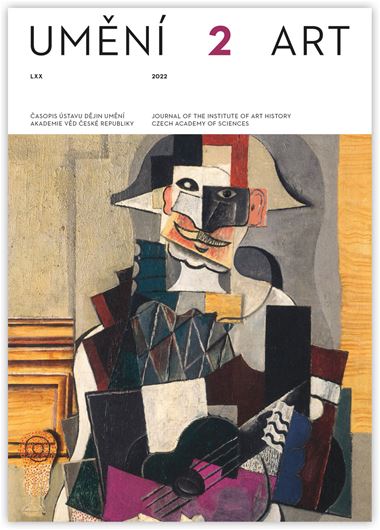Anna Jozefacka – Luise Mahler
Reading Picasso in Munich and Prague in 1922
Two solo exhibitions of Pablo Picasso facilitated by the artist’s dealer Paul Rosenberg and held first at Heinrich Thannhauser’s Moderne Galerie in Munich in May 9–June 10, 1922, and then at the exhibition hall of the Society of Fine Artists ‘Mánes’ in Prague in September 2–October 15, 1922, were critical to the artist’s post-World War I reception. They belong to the era when Picasso transitioned from vanguard to one of modern art’s principal authorities thanks in large part to a campaign of public self-assertion. Marginalized in the literature, the essay presents the first comprehensive account of both exhibitions inserting them into the scholarly narrative of Picasso’s career. It argues that the exhibitions and their reception indicate that despite a continued engagement with Picasso’s cubism, audiences in Germany and newly independent Czechoslovakia actively sought opportunities to investigate Picasso’s heterogeneous post-fall 1913 artistic practice. It also ascertains that the two exhibitions constituted the first direct exposure and comparative examination of Picasso’s expanded artistic practice by Central Europeans. The extensive critical response they generated factored into the further development of contemporary art in this region. Moreover, the essay explicates the instrumental part these exhibitions played in establishing the permanent presence of Picasso’s work in the region by providing an impetus for the inclusion of his oeuvre in the Czechoslovak national collection, as well as the critical shaping of Gottlieb Friedrich Reber’s soon-to be-foremost private collection. That said, ventures such as the 1922 presentations also proved powerful in unsettling a discourse preoccupied with writing Picasso into the history of art for his invention of cubism. Finally, the essay contributes to the understanding of how the pan-European network of communication revived after the war and taking on even greater significance in terms of international reconciliation and cultural reawakening post-1918.
Author's email:
jozefacka.anna@gmail.com /
mahler.luise@gmail.com
DOI: HTTPS://DOI.ORG/10.54759/ART-2022-0203
Full-text in the Digital Library of the Czech Academy of Sciences:
https://kramerius.lib.cas.cz/uuid/uuid:596d62a0-3220-418d-8b95-f2f8ed2751d6
< back

